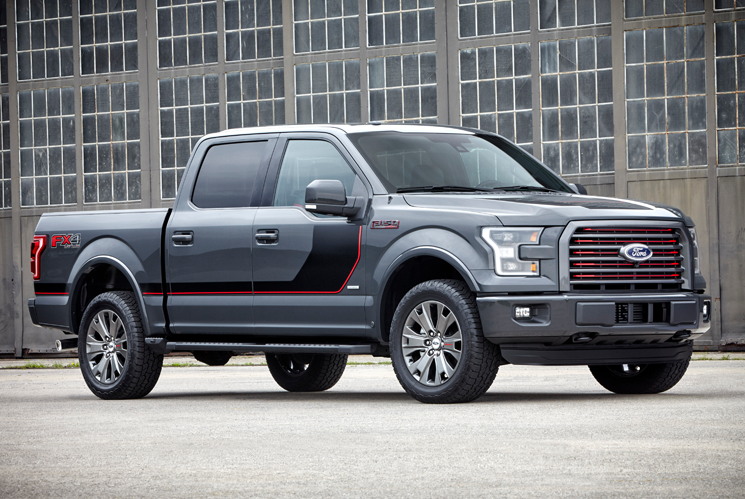Simple strategies to save money on your next new vehicle

Story by John LeBlanc
With more Canadians buying new vehicles last year than ever before, we expect the upcoming spring selling season will dealer lots a busy place for new car and truck shoppers. And as we break out our crystal ball and try to look into the future of the Canadian new vehicle market, the question arises: How can you find the best value?
Like most economic forecasting (how are your RRSPs doing these days?), the answer to that question is not a simple or easy one. Taking into account the complexities of the global auto industry, and how that trickles down to your local new car dealer, speculating on where Canadian new vehicle prices will be is not a one-dimensional exercise. In the end, estimating how much or how little you can save on a new vehicle purchase really depends on the make, model or where the vehicle you are interested in was made and what time of year you intend to buy.
To recap: 2015 was, again, another record-smashing year for new passenger car and truck sales in Canada – and according to a Scotiabank report, Canadian new car and truck sales in 2016 will be around the same volume as last year. The 1.9 million vehicles moved off dealer lots in 2015 represented a 2.5 percent gain over 2014, which itself was a record year.
That said, the Canadian automotive retail market continues to be one of the most competitive in the world, with many of those 2015 sales heavily incentivized by the automakers, either by large factory rebates or subsidized finance rates. Some industry analysts don’t expect 2016 to be as flush for the automakers as the previous 12 months.
That could be good news for buyers, as lower demand could force automakers to jack up their purchase incentives even more than last year. The other tricky financial issue new vehicle buyers need to contend with, however, is the dropping value of the Canadian dollar. Depending on the vehicle you’re looking at buying, the weak loonie could make your next new vehicle more expensive — or not. For example, if you’re in the market for a low-volume, high-end vehicle, there has never been a better time to buy Canadian.
Take, for instance, a new Porsche 911 GT3 RS. With the Canadian dollar at 71 cents US at the time of this writing, the Porsche supercar’s $200,700 Canadian price is an over-$47,000 savings compared to what U.S. buyers would pay.
However, at the other end of the new car market, in which the majority of Canadians buy, the low Canadian dollar may see some vehicle price increases. Keen shoppers will have noticed the slow-but-steady increase in new vehicle freight and pre-delivery inspection fees; from what was once only a few hundred dollars, these hidden fees can add more than 10 percent to the cost of a new vehicle. “Freight and PDI” has also become a great place on a vehicle’s final bill for automakers to add a few hundred dollars without affecting a vehicle’s advertised retail price. For example, the 2016 Hyundai Accent Sedan has an advertised starting price of $13,899, but it comes with a $1,595 “delivery and destination” fee.
Another factor to look for in projecting new vehicle pricing for 2016 is the automotive brand you may be considering. New cars and trucks that are in high demand in the U.S. — such as popular utility-vehicle brands like GMC, Jeep or Subaru — may see price increases over the course of 2016 due to limited availability in Canada.
The other supply/demand criteria to keep in mind when shopping for a new car is the type of vehicle you may be looking at. Last year saw buyers make a definitive move away from cars to crossovers, SUVs and trucks. Seven out of the top 10 sellers in Canada last year were classified as “light trucks.” If you don’t need the utility, however, there could be some big savings if you’re looking at a mainstream sedan in 2016.
As the desire for crossovers, SUVs and trucks continues to gain, the traditional four-door family sedan is finding fewer fans. In fact, Fiat Chrysler recently announced that it plans to stop making its Chrysler 200 and Dodge Dart four-doors so the automaker can add capacity to build more Jeep and Ram utility vehicles. Four-doors, like these Chryslers, may see added purchase incentives as the months go by this year.
The final criteria if you are interested in saving some money when buying a popular vehicle could be when you pull the trigger.
The best-selling vehicle in 2015 was the Ford F-Series pickup truck, which also managed to keep the title of the best-selling light truck. The Honda Civic remained the best-selling passenger car in 2015. As the calendar moves towards the end of the model year, expect both Ford and Honda to add cash on the hoods of these popular models if only to keep their respective sales crowns intact.





![[del.icio.us]](https://www.straight-six.com/wp-content/plugins/bookmarkify/delicious.png)
![[Digg]](https://www.straight-six.com/wp-content/plugins/bookmarkify/digg.png)
![[Facebook]](https://www.straight-six.com/wp-content/plugins/bookmarkify/facebook.png)
![[Google]](https://www.straight-six.com/wp-content/plugins/bookmarkify/google.png)
![[Reddit]](https://www.straight-six.com/wp-content/plugins/bookmarkify/reddit.png)
![[StumbleUpon]](https://www.straight-six.com/wp-content/plugins/bookmarkify/stumbleupon.png)
![[Twitter]](https://www.straight-six.com/wp-content/plugins/bookmarkify/twitter.png)
![[Email]](https://www.straight-six.com/wp-content/plugins/bookmarkify/email.png)